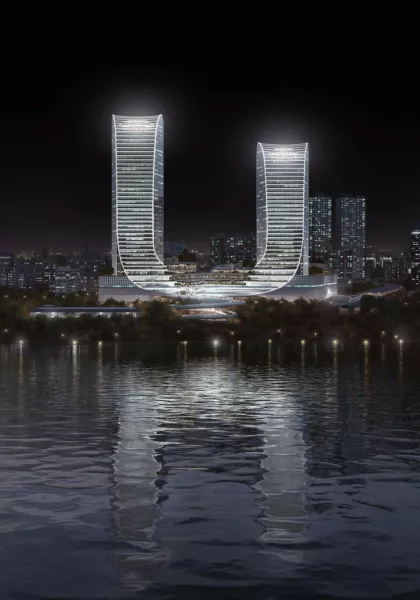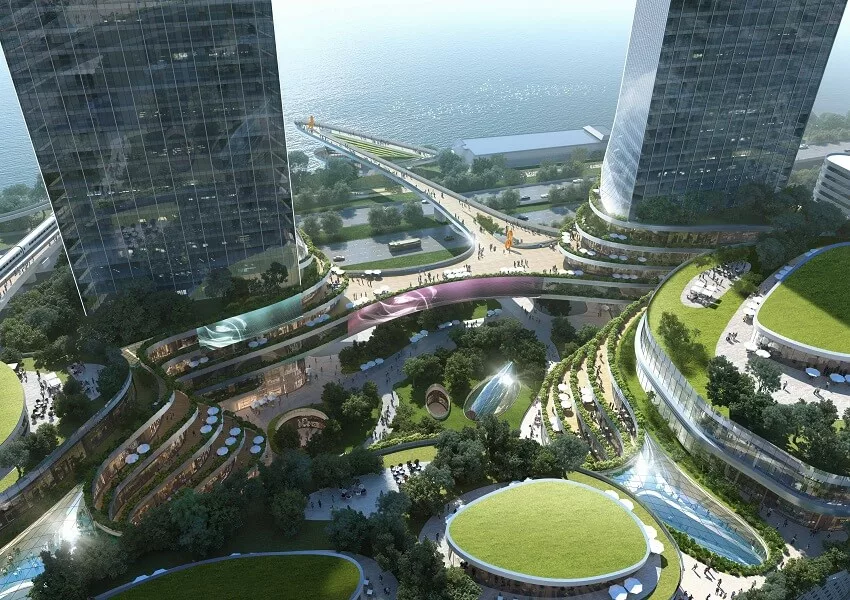
Stefan Krummeck: Transforming Seoul’s Transit Hub with Farrells’ Innovative Design
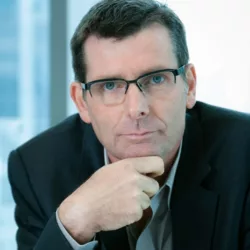
Stefan Krummeck, Director at Farrells, shares the firm’s ambitious project, The East Seoul Bus Terminal, which recently won recognition at the Architecture MasterPrize in the Conceptual Architecture (Transport) category. This groundbreaking project reimagines the traditional bus terminal into a multi-functional, transit-oriented development that will serve as a key urban node in Seoul, South Korea. In this interview, Krummeck discusses the project’s innovative design and its broader impact on urban planning and architecture.
Could you give us a little background on yourself or your company?
Stefan Krummeck: Farrells is an international architectural and urban planning firm founded in 1965 by Sir Terry Farrell. With offices in London, Hong Kong, and Shanghai, we bring together a diverse range of talents to deliver projects worldwide. Our design philosophy draws on over 60 years of leadership in the built environment, creating places that work for people, the environment, and investors. We focus on urbanism and sustainability, delivering transformative projects such as London’s Chelsea Waterfront, Korea’s Incheon Airport GTC, and Hong Kong’s M+ Museum. Our goal is to create places that promote meaningful connections between people and their surroundings.
Please describe the design process for The East Seoul Bus Terminal. How was it resolved?
Stefan Krummeck: The East Seoul Bus Terminal project aims to modernize and transform a deteriorating bus terminal into a mixed-use development, incorporating retail spaces, serviced apartments, and a transit hub. The terminal will serve as a major transportation gateway, connecting Seoul to other cities. We approached the design with the intent to create a vibrant space that blends transportation, retail, and living into one cohesive environment.
One of the key design features is the three-level transport hub. The first underground level houses the waiting room, while the second and third levels handle arrivals and departures. Circular skylights and natural light from the retail spaces above create a pleasant ambiance for passengers, integrating nature into the underground terminal. The design also integrates Gangbyeon Metro Station and the nearby Civic Garden, creating a seamless connection between the bus terminal and the city.
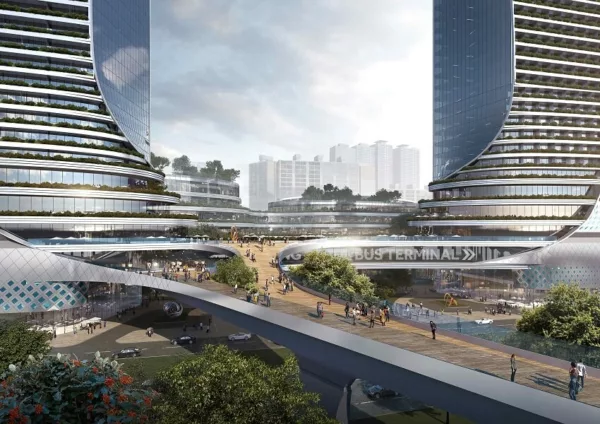
What is most outstanding or innovative about the project?
Stefan Krummeck: The project is notable for its integration of multi-functional spaces and its urban connection to the Han River. Unlike traditional commercial developments, The East Seoul Bus Terminal offers stunning views of the river, enhancing its appeal and value. The design not only maximizes riverfront exposure but also connects the terminal to the river’s jogging and biking tracks, creating a walkable loop that activates the waterfront.
The towers, which house serviced apartments and a hotel, are positioned to offer 100% of the units views of the Han River. These cascading terraces are instantly recognizable and form part of the retail podium’s interior and exterior, creating outdoor leisure spaces that overlook the civic garden.
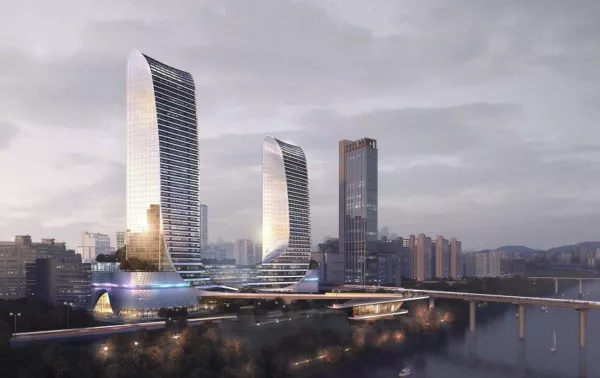
What challenges were faced throughout the process?
Stefan Krummeck: One of the main challenges was integrating a complex, multi-functional transport terminal while ensuring it remained connected to the urban fabric. The proximity to the Han River presented another unique opportunity, but also required careful planning to incorporate pedestrian and cycling paths into the design. Furthermore, the challenge of accommodating heavy bus traffic underground while maintaining natural light and ventilation required innovative solutions, such as using passive design principles and high-performance glazing to achieve energy efficiency.
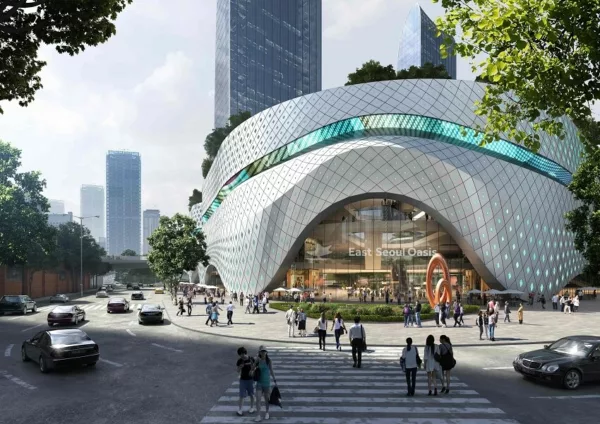
What future trends, technologies, or social changes do you feel will have a major impact on your discipline?
Stefan Krummeck: Sustainability will continue to be a driving force in architecture. Passive design, renewable energy systems, and green roofs will play an increasing role in minimizing waste and carbon emissions. Technology, such as smart city infrastructure and 5G, will also impact how we design, allowing for more optimized and connected environments.
The rise of electric vehicles and urban air mobility will change how we design transit hubs. Seamless integration of transportation systems will be critical, as will the need for modular spaces that adapt to evolving work patterns and lifestyle changes. Furthermore, the growing emphasis on wellness and accessibility will shape future design strategies, ensuring spaces accommodate all demographics.
How can architecture and urban planning make a real difference to society and the world?
Stefan Krummeck: Architecture and urban planning have the power to create equitable and sustainable communities. Transit-oriented developments, like The East Seoul Bus Terminal, offer opportunities to connect people to services, jobs, and social networks, reducing dependence on cars and encouraging walkability. Densifying urban areas around transit corridors promotes sustainability by lowering carbon emissions and enhancing access to public spaces and green areas.
Prioritizing pedestrian-friendly environments, green spaces, and mixed-use developments fosters social cohesion and mental well-being. By designing inclusive spaces and reducing barriers to mobility, we can create more livable and vibrant communities. Urban planning, when done thoughtfully, has the potential to address some of the most pressing societal challenges, from climate change to inequality.
How do you feel about receiving an Architecture MasterPrize? What difference do you feel it will make to your future or the future of your company?
Stefan Krummeck: It’s an incredible honor to receive the Architecture MasterPrize. It highlights our commitment to responsible urban planning and sustainable design. This recognition strengthens our reputation and encourages us to continue pushing the boundaries of architecture. It also opens up new opportunities for Farrells to collaborate on transformative projects that will shape the cities of tomorrow.
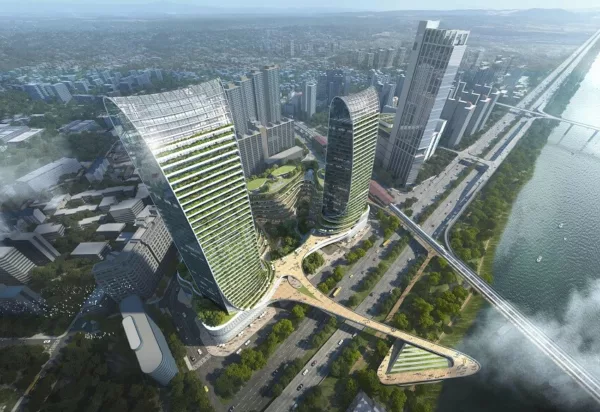
We thank Stefan Krummeck for providing valuable insights into Farrells‘ vision for The East Seoul Bus Terminal. This project highlights the firm’s dedication to innovative, sustainable urban planning that enhances the lives of people while connecting them to the cities they live in.
